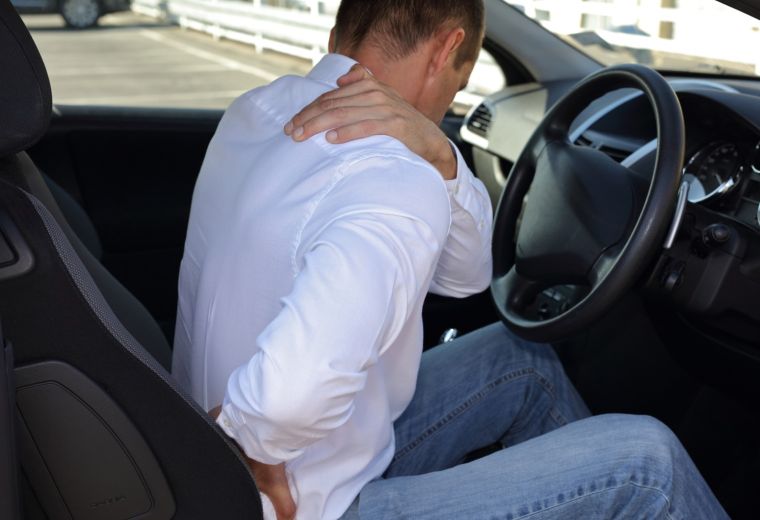Whiplash is a common injury caused by sudden movements of the head and neck, typically during a car accident. It can be painful and uncomfortable, and in some cases, it can take weeks or even months to fully recover. However, there are several ways to prevent whiplash, and one of the most important is to practice safe driving habits.
In this article, we’ll discuss some tips for driving safely to prevent whiplash and ensure a comfortable ride. We’ll also offer some advice on what to do if you experience whiplash after an accident.
Tips on Driving Safely to Prevent Whiplash
Whiplash is often caused by sudden acceleration and deceleration, so the best way to prevent it is to drive cautiously. Here are some tips:
- Adjust your seat and headrest- Proper seat and headrest adjustments are essential for preventing whiplash. Your seat should be positioned so that you can comfortably reach the pedals and steering wheel while maintaining a slight bend in your knees. The headrest should be adjusted so that the top of the headrest is level with the top of your head, and the distance between the back of your head and the headrest is no more than two inches.
- Wear your seatbelt- Wearing your seatbelt is one of the most important things you can do to prevent whiplash and other injuries in the event of an accident. Make sure to fasten your seatbelt securely across your lap and chest, with the lap belt positioned low across your hips and the shoulder belt across your chest and over your shoulder.
- Keep a safe distance- Maintaining a safe distance from the car in front of you can help you avoid sudden stops and reduce the risk of whiplash. A good rule of thumb is to keep a distance of at least one car length for every 10 mph of speed.
- Brake and accelerate smoothly- Sudden stops and starts can increase the risk of whiplash, so it’s important to brake and accelerate smoothly. This not only helps prevent whiplash, but it can also improve fuel efficiency and prolong the life of your brakes.
- Avoid distraction- Distracted driving is a leading cause of accidents and can increase the risk of whiplash. Avoid texting, eating, drinking, or doing anything else that takes your attention away from the road. If you need to make a call or send a text, pull over to a safe location.
- Take breaks on long trips- Long trips can be tiring and increase the risk of accidents. To prevent whiplash and other injuries, take frequent breaks to stretch your legs, hydrate, and rest your eyes. This can also help you stay more alert and focused on the road.
- Practice good posture- Good posture can help reduce the risk of whiplash by keeping your head and neck in a neutral position. Sit up straight, with your back against the seat and your head facing forward. Avoid slouching or leaning forward, which can increase the risk of injury in the event of an accident.
Now that you know how to drive safely to reduce your risk of whiplash in Salt Lake City, let’s look at what you should do in the event of an accident.
What to Do If You Experience Whiplash After an Accident
If you experience whiplash after a car accident, it’s important to take action right away. Here are some tips to help you recover:
- See a doctor- The most important thing you can do is get medical attention as soon as possible. Even if your symptoms are mild, it’s important to seek medical advice in order to assess the severity of your injury and begin the healing process.
- Rest and avoid strenuous activities- Rest is essential for recovery, so it’s important to avoid strenuous activities that could aggravate your injury. Follow your doctor’s instructions regarding activity level, and take frequent breaks throughout the day.
- Apply ice or heat- Applying cold packs to the affected area can help reduce swelling and ease pain. Heat treatments can also be beneficial for certain types of whiplash. Be sure to follow your doctor’s instructions regarding the use of cold and heat treatments.
- Take medications as prescribed- Your doctor may prescribe medications such as pain relievers or muscle relaxants to help manage your symptoms. Follow directions and take the medication as prescribed.
- Seek physical therapy- Physical therapy can help you regain range of motion and strength by using stretching, exercises, and other treatments. Ask your doctor or therapist for recommendations on exercises to do at home.
Whiplash is a serious injury that can have long-term consequences if left untreated. Following the tips outlined above can help you reduce your risk of whiplash and ensure a successful recovery if you experience an accident. With proper care, you can get back to your normal activities with minimal disruption.

